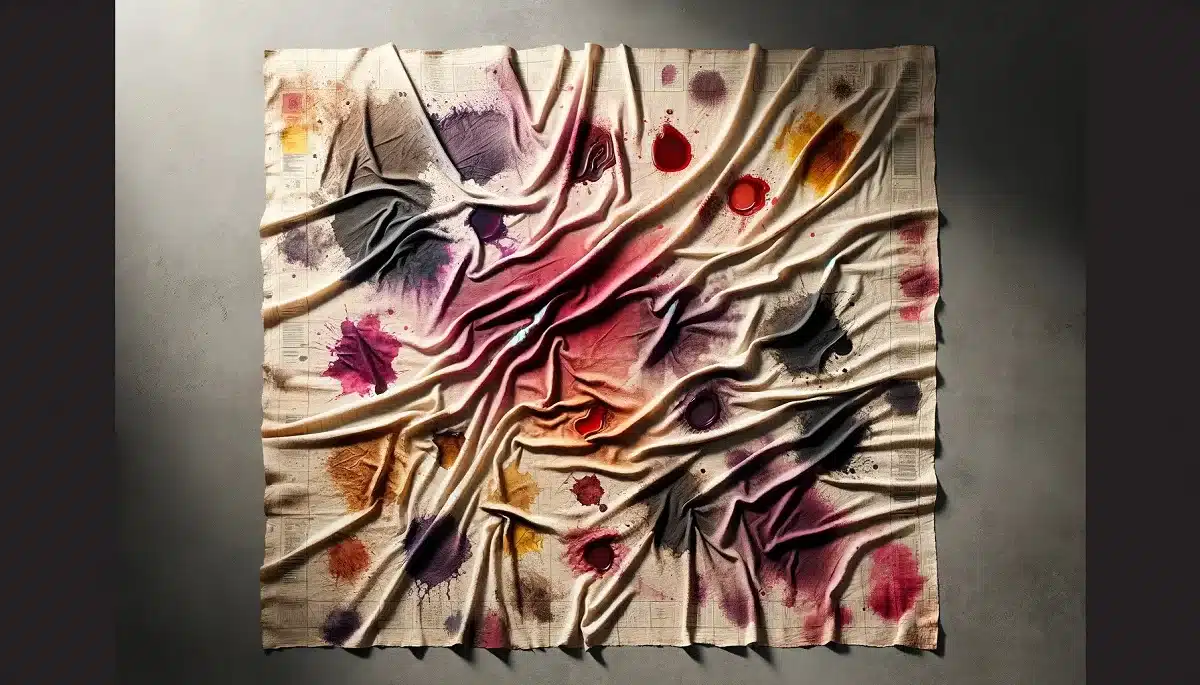Stain: Definition and Types
A stain is any substance or change on a surface that is undesirable, often noticeable, and distorts the original color or texture. Stains can appear in a wide range of areas, from clothes to furniture, from walls to skin, and can occur for various reasons. Here is detailed information about stains:

Stain Types
Stains can be divided into different categories according to their form and source. Here are some common types of stains:
- Food Stains: These are stains caused by food and drink spills. Coffee, tea, juice and oil stains fall into this category.
- Oil Stains: Caused by various types of oils, such as kitchen oils, body oils, or oils leaking from machinery.
- Ink Stains: These are stains caused by writing materials such as pen, ink or toner.
- Cosmetic Stains: These are stains caused by make-up materials, hair dye and skin care products.
- Sweat Stains: These are stains formed by body sweat reacting with clothes.
- Grass and Soil Stains: These are stains that may occur during playing or working in natural environments.
- Blood Stains: May occur as a result of accidents, injuries or some health problems.
Stain Cleaning
Stain cleaning varies depending on the type of stain, the material of the surface, and how long the stain has been there. In general, it is important to remove stains quickly and with the right methods:
- Stain Removers: There are many stain removers on the market produced specifically for different types of stains. These products target the stain and dissolve and clean it.
- Natural Solutions: Natural ingredients such as vinegar, lemon juice and baking soda can also be effective in removing stains.
- Professional Help: For stubborn stains, it may be necessary to seek help from professional cleaning services or dry cleaning.
Stains are an inevitable part of daily life and can appear in a variety of ways. The important thing is to correctly identify the type of stain, apply appropriate cleaning methods, and prevent stains if possible. Thus, it may be possible to preserve the original appearance and cleanliness of the surfaces.
Stain Prevention Methods
Preventing stains can be less time-consuming and costly than cleaning processes. Here are some precautions that can be taken to prevent the formation of stains, especially on clothes, furniture and other surfaces:
Stain Prevention for Clothes
- Taking Precautions While Eating: Using an apron while eating or consuming food carefully can prevent staining, especially when you encounter foods and drinks with a high potential for staining.
- Using Quality Products: Quality clothing and accessories may be made from materials that are less prone to stains. Choosing water-repellent and stain-resistant fabrics can minimize stain formation.
- Treating Clothing with Protective Sprays: Water- and stain-repellent sprays can protect clothing, especially during outdoor activities.
Stain Prevention for Home and Furniture
- Applying Protective to Furniture and Carpets: Protective sprays specially produced for furniture and carpets can prevent these surfaces from getting stained.
- Cleaning Regularly: Regular cleaning reduces the accumulation of dust and dirt, which can prevent stains.
- Using Food and Drinks Carefully: Limiting food and drink consumption on these surfaces, especially if light-colored furniture and carpets are used, can reduce the risk of stain formation.
General Recommendations
- Quick Response: Intervening quickly in case of any spillage or contamination prevents the stain from becoming permanent.
- Stain Prevention Products: It may be useful to take precautions such as using stove protectors to prevent oils that may splash during cooking or covering children’s play areas with certain materials.
- Proper Storage: Proper storage of clothing, especially out of season, can prevent mold and other types of stains.
Stain prevention methods, when made a habit in daily life, ensure that surfaces remain new and clean for longer. These measures are effective ways to both preserve the aesthetic appearance and save on cleaning costs in the long run.